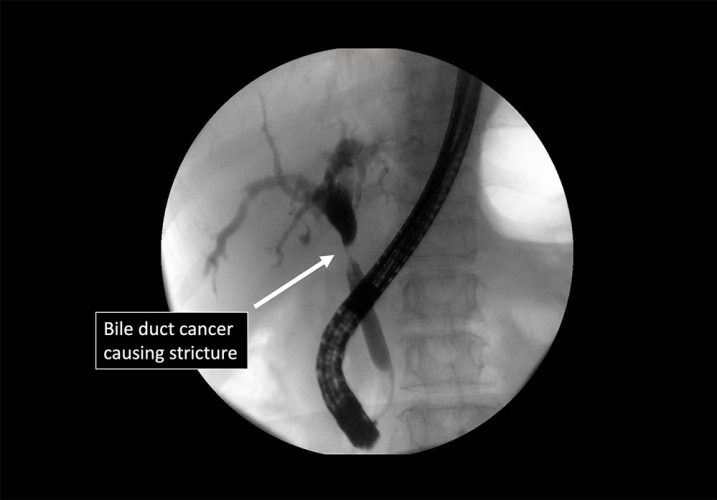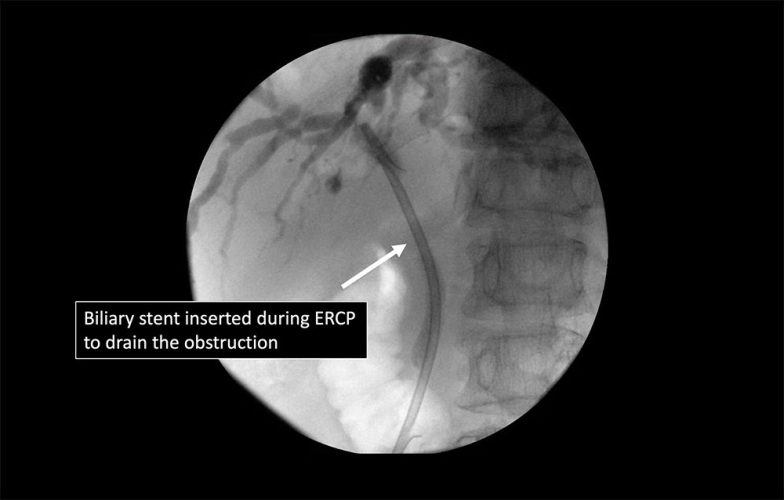Bile Duct Cancer
Bile ducts are thin tubes that carry bile between the liver, gall bladder and intestines. Cholangiocarcinoma, also known as bile duct cancer, is the cancer that affects these tubes. Depending on where within the tubes it occurs, bile duct cancer can be of different types:
- Intrahepatic cholangiocarcinoma: occurs in those parts of the duct that is within the liver and is sometimes categorised under liver cancer.
- Hilar cholangiocarcinoma: occurs in the ducts that are situated immediately outside the liver.
- Distal cholangiocarcinoma: occurs in the ducts situated closer to the small intestines.

The causes of bile duct cancer are unknown; however, the risk factors of bile duct cancer include:
- Old age
- Primary sclerosing cholangitis
- Choledochal cyst
- Liver-affecting parasites
Symptoms:
Bile duct cancer often exhibits the following symptoms:
- Jaundice
- Intense itchiness of the skin
- Clay-coloured stools and dark-coloured urine
- Unexpected and unplanned weight loss
- Fatigue
- Abdominal pain on the right side, below the ribs
Treatment:
To confirm the diagnosis, a blood test, scans and tissue samples are needed. The biochemical test will show raised in bilirubin which indicates jaundice. The common tumour marker for bile duct cancer such as CA 19-9 will be raised too. The CT and MRI scans will show the bile duct tumour, and the duct proximal to the tumour will be swollen and dilated. Further investigation with endoscopy to obtain samples will be needed to confirm the cancer. Sometimes a stent will be inserted into the bile duct during the endoscopy to drain the obstruction to relieve the patient’s jaundice.

If the tumour has not gone distant, it is curable with surgical resection. The principle of surgery to treat bile duct cancer is to ensure a clear margin with the removal of the affected regional lymph nodes. Operation for bile duct cancer depends on the level of the tumour. E.g.
- The tumour located in the liver will require a liver resection.
- The hilar cholangiocarcinoma will require bile duct resection together with liver resection.
- Distal bile duct cancer will require bile duct excision alone or a Whipple’s procedure when the tumour involves the head of the pancreas.
- The surgery for bile duct cancer can be challenging; your doctor will assess the suitability if it can be treated with minimally invasive methods with laparoscopy or robotic surgery.
Locally advanced cancer may benefit from neoadjuvant treatment before surgical resection. However, palliative treatment will be discussed if the tumour has metastasised.







